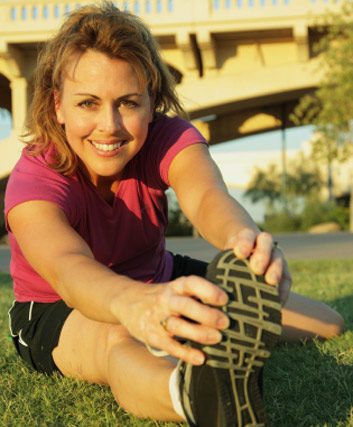6 tips for exercising when you have diabetes
When managing diabetes, engaging in regular exercise can help to lower your blood sugar and raise your life expectancy. Here are six tips for exercising with diabetes

Source: Web exclusive, August 2010
Why get active? Exercise helps you maintain a healthy weight, lifts your mood and promotes mental wellbeing. And if you have diabetes, regular physical activity can actually lower your blood sugar and raise your life expectancy. ‘The evidence is that exercise reduces mortality and morbidity for just about all populations with diabetes, both type 1 and type 2,’ says Dr. Maureen Clement, a diabetes specialist in Vernon, B.C. ‘We certainly want to encourage and recommend it.’
Before you head for a heavy workout, here are six exercise tips to keep in mind.
1. Talk with your doc
If your exercise regime will involve more than a daily brisk walk, check in first with your healthcare professional. You’ll want to be assessed for any diabetes complications such as those involving the cardiovascular or nervous system. Depending on your medications and health status, some types of activity may not be recommended.
2. Stock up on fitness accessories
When you exercise, make sure you always carry an emergency snack or drink that will raise your blood sugar quickly, like glucose tablets, hard candy or fruit juice. It’s also a very good idea to wear your medical alert bracelet or some other visible tag that identifies your diabetes.
3. Modify your meals and insulin as needed
Although physical activity can lead to lower blood sugar on average, you may experience a spike after exercise. It may be especially noticeable if you have type 1 diabetes. But even if you have type 2, you may find your blood glucose levels are higher during or after a short, intense activity. A competitive sport, for example, can get your adrenalin pumping, and that will raise your blood sugar. Check your blood glucose levels before, during and even long after you finish your exercise to learn how your body is responding. ‘You have to figure out how to adjust your food and insulin for exercise,’ says Dr. Clement. ‘It does require a lot of thinking ahead.’
4. Be on the lookout for a sugar low
If you’re trying a new activity or going for a longer, more intense workout, it’s especially important to check your blood glucose level every half hour. If your sugar measures less than 4.0 mmol/L, or if you have symptoms of hypoglycemia like trembling or confusion, stop the activity right away. Consume a fast-acting food or drink’preferably a carbohydrate’to raise your blood sugar. If you have type 1 diabetes, try to avoid intense exercise late in the day. That can increase your risk of overnight hypoglycemia.
5. Watch your feet
Protect your feet from damage by taking a few sensible precautions. Wear cotton or cotton-polyester socks, and choose shoes that feel good and fit well. Keep your feet dry, and check them regularly for blisters.
6. Drink up
You may want dry feet when you exercise, but you won’t want a dry mouth. Everyone should make an effort to stay hydrated when they exercise. But if you have diabetes, it’s even more critical. Dehydration can cause blood sugar problems as well as stress your heart. Drink plenty of water before and during physical activity. If it’s hot out, be sure to load up on extra fluid.
By taking a bit of care, you can enjoy physical activity safely. ‘Exercise has so many benefits,’ Dr. Clement notes. ‘It’s more than recommended ‘ it’s a necessary element in the management of type 1 and type 2 diabetes.’
Don’t miss out! Sign up for our free weekly newsletters and get nutritious recipes, healthy weight-loss tips, easy ways to stay in shape and all the health news you need, delivered straight to your inbox.




